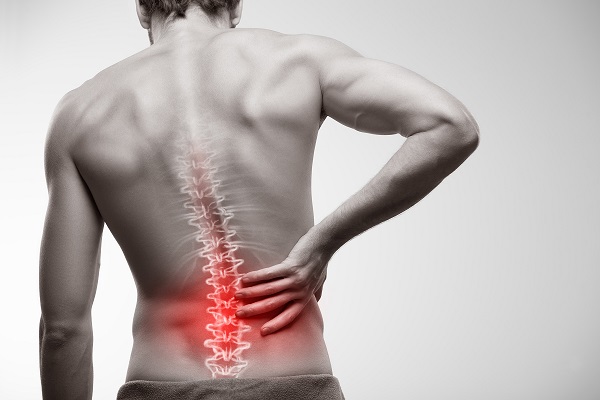
Strengthening Your Spine and Protecting Your Joints: A Comprehensive Guide
We’ll explore the fascinating world of spinal flexibility and the importance of working on your spine’s ability to round or flex. Despite popular belief, some spine flexion can be beneficial. I will introduce a gentle scale to help you gradually increase spinal flexibility, promote mobility, and protect your joints. So, let us get started on the art of spinal flexibility and responsib
Chapter 1: Understanding Spinal Flexion
Spinal flexion, or the ability of your spine to round, can be an essential component of your mobility and overall well-being. However, it’s crucial to approach it responsibly. When we discuss spinal flexibility, we are referring to the capacity of your spine to round in a controlled manner.
Chapter 2: The Spinal Flexion Scale
To help you gauge your spinal flexibility, we’ve developed a scale that progresses from assisted flexibility to loading. The ultimate goal is to reach the ATG (Ass to Grass) standard, which means comfortably handling a weight equal to 25% of your body weight with your wrists below your toes and your knees not bending.
Chapter 3: Training Flexibility and Strength in Harmony
To enhance your spinal flexibility and strength, we utilise incline benches. These benches allow you to train your strength and mobility simultaneously. The key is to find the right balance that suits your level of flexibility and strength.
Chapter 4: Addressing Tight Inner Thighs
In some cultures, resting in deep squats is a common practise. However, for many, this position can lead to unnaturally tight inner thighs. Tight inner thighs can hinder your ability to progress to a flat bench for spinal flexibility training.
Chapter 5: The Importance of Context
The context in which you train your spinal flexibility matters significantly. For example, many traditional fitness guidelines discourage exercises that involve spinal flexion, going overhead, allowing your knee over your toe, or bending below 90°. However, these restrictions may not be universally applicable.
Chapter 6: Understanding the Freedom-Responsibility Balance
It’s essential to strike a balance between freedom and responsibility when it comes to your training. While too much freedom can lead to issues, excessive restrictions can be equally detrimental. The answer lies in responsible training that helps you become both mobile and protected.
Chapter 7: The Assisted Approach
The first step towards building spinal flexibility is the assisted approach. Using assistance can take some of the pressure off your back and make it more comfortable to round your spine. This method helps you gradually build your flexibility while reducing the risk of injury.
Chapter 8: Gradually Increasing the Load
To progress from the assisted approach, you can start adding some weight. This doesn’t mean you need to lift extremely heavy weights immediately. Just like the assisted approach, you can begin with a reasonable load to stretch and challenge your spine safely.
Chapter 9: Tommy Kono’s Approach
Tommy Kono, one of the most successful American Olympic weightlifters, intentionally used deadlifts with light weights to help stretch and balance his body. This approach demonstrates that you don’t need to use extremely heavy weights to improve your spinal flexibility and protect your back.
Chapter 10: Understanding the Knee-Over-Toe Principle
The knee-over-toe principle involves allowing your knee to move over your toe during exercises. While it may be seen as risky, it’s an essential part of training for more protected knees. Building a full range of motion, including bending below 90°, is vital for healthy knee joints.
Chapter 11: Going One Side at a Time
Training one side at a time can be particularly useful for addressing flexibility and strength imbalances. This approach provides an elevation scale from assisted to loaded, helping you gradually progress while focusing on your specific needs.
Chapter 12: The Stairwell: A Valuable Tool
A stairwell can serve as a fantastic tool for the ATG split squat progression. While many gyms may not have mobility stations for this purpose, a stairwell can easily become your go-to tool for training flexibility, strength, and balance.
Chapter 13: The Seated Good Morning Incline Bench
For developing a bulletproof lower back, the seated good morning incline bench is a valuable addition to your training routine. It stops you short and ensures you don’t overextend your lower back, making it a safe way to improve your lower back strength and flexibility simultaneously.
Chapter 14: Taking the Time to Progress Safely
With these exercises and approaches, safety is a top priority. Progress gradually and steadily to protect your body and build the flexibility and strength you desire. There’s no need to rush; it’s essential to listen to your body and make progress responsibly.
Chapter 15: Seeking Guidance
Consider contacting a coach or fitness program for assistance if you need direction with these exercises or have any questions. Receiving feedback and assistance from experienced individuals can be invaluable in your journey to improved spinal flexibility and strength.
Freedom with Responsibility
this video aimed to demonstrate that spinal flexion and certain exercises often deemed risky can be essential for your overall health. By embracing responsible training, you can develop the flexibility and strength you need to lead a healthier and more active life. Balance the freedom to explore your body’s potential with the responsibility to protect it and enjoy a more vibrant and active lifestyle.
I hope this video provides you with the tools to understand the importance of spinal flexibility, responsibly building your strength, and taking your fitness to new heights. Remember, it’s not about blindly following rules but about making informed decisions that work best for your unique needs.

